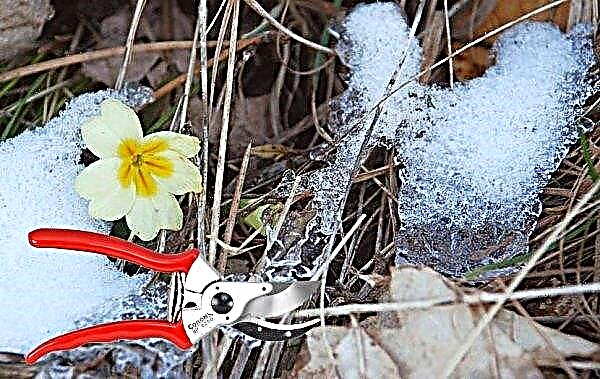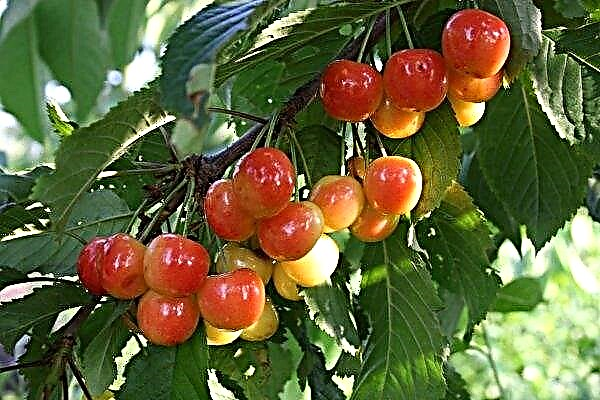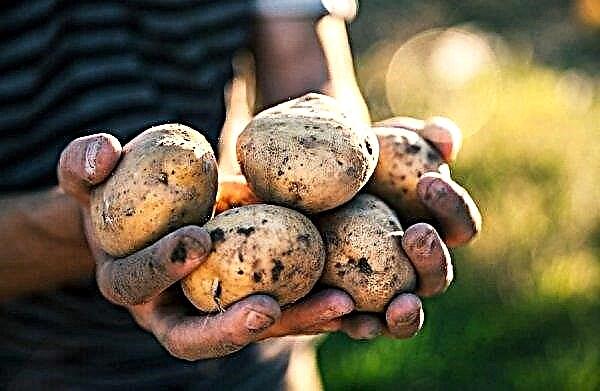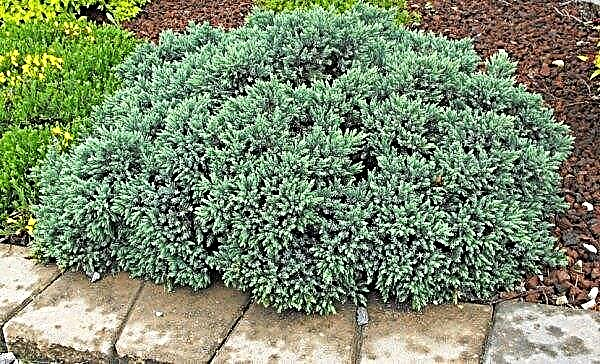Fragrant garden melon is tasty and healthy, adults and children love it. To get a good harvest of a sweet beauty is a troublesome business, but quite feasible. One of the secrets of getting fruits of optimal size, ripened on time, is pinching the bushes and forming lashes. About this - in our material.
What is formation and what is it for?
The benefit of forming is to pinch off the “extra” lashes and ovaries so that the beneficial substances, moisture, micro and macro elements accumulate in the fruits in the right amount and they ripen on time, of the right size and sugar content. The formation of branches will help regulate the quantity and quality of fruits, accelerate the ripening time.
Important! On the main lash, only male flowers are formed; they do not produce fruit.
Features of melon formation
The plant is formed in order to obtain 3-4 aromatic fruits. The peculiarity of the plant is the absence of a female flower on the central stem, so pinch the whip above 3-4 leaves.
Optimal timing for melon formation
The bush begins to form after the appearance of the fourth main leaf. Cotyledon leaves are not considered. After pinching (or cutting) the tops in the sinuses, lateral branches grow on which the fruits will form. Knowing how to pinch the side lashes, you can achieve a harvest of up to 7-8 large fruits from one bush.
Formation Methods
There are two ways to grow melons in open ground:
- on a trellis;
- in the spread.
The choice depends on the size of the plot and the desire of the gardener.
Trellis
Distinctive qualities of the method of forming a melon bush on a trellis:
- space saving;
- free access to the entire plant, simplified care of the bush;
- the whips completely “bathe” in the sunlight, the fruits grow sweet, juicy.
 The tapestry is installed after planting seedlings in open ground or after the appearance of the first two leaves.
The tapestry is installed after planting seedlings in open ground or after the appearance of the first two leaves.A common plant formation pattern is presented by agronomist Nikolai Kurdyumov:
- Fruit-bearing lashes are formed from third-order shoots.
- The mother lash is pinched after the appearance of the fifth sheet over the third sheet.
- Of the lateral branches, 2 of the strongest are left, they are pinched over 4–5 leaves.
- After the appearance of third-order shoots (there may be 8), the 6 strongest leaves with fruits with a diameter of 6–7 cm are left. They are pinched above the fourth leaf, all female flowers are cut off.
So that during ripening the melons do not break off under the weight of their own weight, the lashes are tied to the net.
Upset
With the development method, pinching melon is done either by the above method, or according to the scheme:
- After the fourth main sheet, the top of the whip is nipped off or cut off.
- In the sinuses, only the 2 strongest branches from the left are left, the rest are removed.
- On the scourge leave 3-4 ovaries, pinch off the crown after the third true leaf, remove all the flowers.

Melon Care After Formation
Melon is a whimsical plant that loves moisture, light soil, warmth and sunlight.
Proper care and top dressing will help to grow a decent crop:
- The soil must be moistened constantly, without overfilling, otherwise the fruits will rot, gain excess moisture, and reduce sugar content.
- Every 2 weeks, the plant is fed with organic fertilizers from fermented green grass.
- Plant fertilizer is alternated with ash: melon does not like acidic soils. Fertilize the soil around the bush: with watering, beneficial substances get to the roots of the plant.
- The soil must be loosened, preventing the formation of a crust on the surface. Weeds need to be weeded regularly.
Serious mistakes gardeners
To get a good crop of fragrant garden crops, you should know and avoid common mistakes of other gardeners:
- Since the melon does not like cold and drafts, you can not choose a shaded area for it in the northern part of the garden.
- Pumpkin and cucumber are the closest relatives of the melon, so it is better not to plant juicy melon fruits on the site where they were grown last year, so that they do not become infected with diseases characteristic of these vegetables.
- Do not over-fill the area with water. Even in a dry summer, the amount of moisture should be normalized, otherwise the fruits will be tasteless, fresh and watery.

Useful tips gardeners
Experienced gardeners successfully grow melons both in open ground and in greenhouses, while observing the following rules:
- Self-collected seeds bear fruit well in the third year. To prevent diseases, before planting, they are soaked in a solution of potassium permanganate.
- It is better to grow seedlings in peat cups or tablets: when transplanted into open ground from a plastic container, the root system of the plant can be damaged. In addition, peat will serve as the first top dressing of the plant.
- In the growing phase every 2 weeks, plants are sprayed with Bordeaux liquid to prevent and prevent powdery mildew.
Did you know? Every second Sunday of August Turkmenistan celebrates Turkmen Melon Day, which is considered the most delicious and delicious fruit of Asia.
Enjoying melons grown with your own hands is the pleasure that every gardener can get for his painstaking care for the capricious fragrant beauty in his personal plot.












